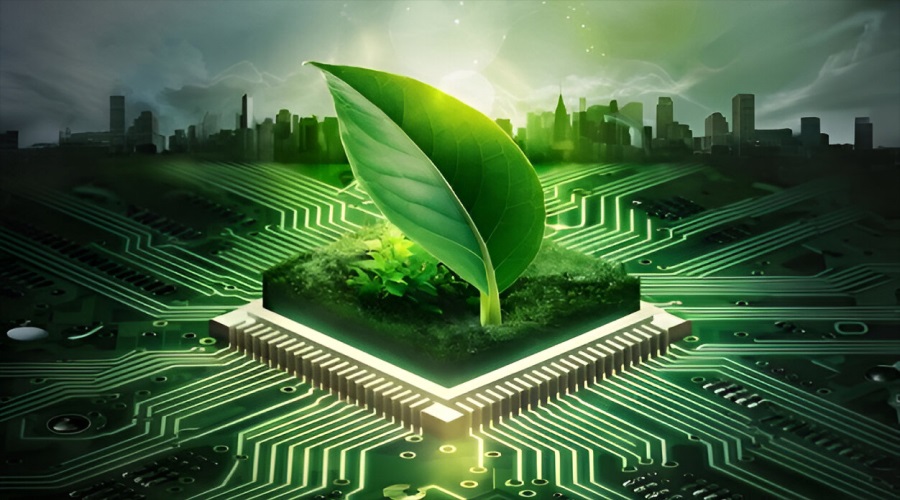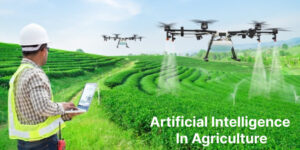
Green technology, also called “Green Tech,” is a rapidly growing sector that develops and uses solutions that reduce environmental harm and promote sustainable living. It is an option when the world faces climatic change, resource depletion and pollution beyond scientific innovation and the adoption of ecological practices.
From renewable energy systems to sustainable agriculture practices, green tech is set to cut across industries and change the world towards a more sustainable future. To have detailed information on this, let’s look into the article and understand it. Additionally, companies like Utility Bidder play a role in helping businesses navigate energy-efficient solutions, further contributing to this global transition.
What is Green Technologies?
The Green Tech itself consists of the broadest geographical scope from innovations brought for damage mitigation to the environment for sustainability. It fuses principles of various sciences like energy, atmospheric science, resource sciences and hydrology into one comprehensive dimension. Key objectives under this technology include reducing carbon emissions, resource conservation and waste minimization.
- Reduction in emissions: Most green tech shall address the problem of cutting carbon dioxide emissions and other greenhouse gases to prevent climate change from occurring.
- Energy Innovations: Solar energy, the most remarkable type of green energy, is now much cheaper in most countries than fossil fuel.
- Investment Opportunities: Green tech investments can be made by holding shares commercial papers or government securities that finance sustainable activities.
History of Green Technologies….
Green technology traces back its origin to environmental movements in the 20th century, provoked by the adverse effects of industrialization on the planet. The oil crises in the 1970s awoke the concern about seeking alternatives and sources of energy.
The passing of global accords, such as the Kyoto Protocol (1997) and the Paris Agreement (2015), have shown that greenhouse gases must be curtailed to hasten the development of green technologies.
Type of Green Technologies

1. Renewable Energy Technologies
Renewable energy refers to technology having the potential of using natural resources, sunlight, wind or water to produce electricity. Some examples are solar panels, wind turbines and hydroelectric. With the application of AI and IoT for renewable systems, the efficiency in terms of real-time monitoring and predictive maintenance has increased thus maximizing energy output and minimizing operational costs.
2. Energy Storage Solutions
It is a realization for stabilizing renewable energy supply, some energy like batteries pumped hydro storage and emerging technologies like hydrogen fuel cells allow them in storing and releasing of surplus energy when required. Advances in nanotechnology enable high capacity, fast charging storage systems to guarantee the supply of reliable energy for homes, industries and transport.
3. Sustainable Transportation
It means emission reduction by means of electric, hydrogen fuel cell and hybrid vehicles. Also, transport modes such as public
transit with electric buses, not conventional and high speed rail are becoming more environmentally friendly. Strategies for urban planning, like bike sharing and pedestrian infrastructure, are also in favor of mobilizing this environmentally friendly solution.
4. Carbon Capture and Storage (CCS)
It can capture carbon dioxide emissions from industrial processes and power plants before they reach the atmosphere. The captured carbon is then stored below the Earth’s surface or commercially recycled for industrial use. Enhanced oil recovery and mineralization are some major emerging applications of CCS making it a very valuable weapon against climate change.
5. Green Building Technologies
This technology can be identified as energy efficient design, construction material and smart building system. Eco-building projects now include features such as green roofs, solar panels and rainwater harvesting systems. By and for the people, smart systems, using artificial intelligence and IoT, work on optimizing energy use, monitoring air quality and enhancing occupant comfort.
6. Waste Management and Recycling
Advanced management systems for waste transform it from landfill disposal to recycling, composting and waste to energy technologies. AI enabled sorting systems improve the recycling rate, while biodegradable plastics and a circular economy approach can minimize environmental costs.
7. Water Purification and Conservation
It includes advanced filtration systems, desalination plants and smart irrigation systems. These innovations ensure sources of water that are environmentally benign and therefore assure clean and sustainable water. Filtering systems based on graphene, solar-purification systems are technologically revolutionizing the way water is treated.
8. Sustainable Agriculture
This technology adopts techniques like precise farming, vertical farming and organic farming that are environmentally friendly by lessening their impacts. AI and drones are the technologies that help monitor the real-time activities of crops whereby aids in optimizing the amount of water and fertilizers used.
Also Read: Smart Home Technologies
Green Technology Examples

1. Solar Panels
They are electrical devices that convert sunlight into electricity, thus it is a form of clean energy or renewable energy, they are also used in residential or commercial areas and in industries. Bifacial panels and perovskite solar cell technology innovations have greatly increased efficiency and affordability.
2. Wind Turbines
It uses the kinetic energy of wind and converts it into electric energy. Most modern wind turbines utilize advanced sensors and artificial intelligence systems to improve their performance and produce optimum energy. Offshore turbines have become an increasing inclusion in the world’s renewable energy capacity because their windiness is typically higher than land-based turbines. They also save land but produce energy significantly.
3. Green Energy Storage Systems
Li-ion batteries store energy in such a way that renewables can meet the energy demand. Flow and solid state batteries promise to be more efficient and longer living than previous forms. Energy stored from excess solar and wind generation ensures a consistent supply of energy, even during periods of low generation.
4. Electric Vehicles
It is changing the transport system through the encouragement of less greenhouse emissions and dependency on fossil fuels, electric vehicles transform the automobile scene in their use of such emissions and insulation. Fast charger networks and advancements in battery technology have thus made accessible electric vehicles. Now, many organizations focus on incorporating renewable energy sources with EV charging stations.
5. Renewable Biomass Energy
It constitutes the energy from biological materials such as waste materials from agricultural activities, wood and algae. The combustion emits carbon dioxide which is balanced by the uptake of carbon by the growth of the material thus it is carbon neutral. Innovations in biomass conversion technologies such as pyrolysis and gasification, increasing efficiency and scalability.
Also Read: What is LiFi Technology
Advancements in Green Technology
Green Cloud Technologies

It belongs to the revolutionized form of cloud computing that leans towards ecological sustainability and environmental responsibility. It is a kind of energy efficient technology and practice towards energy consumption and carbon emittance reduction. The requirements for advanced green technologies are dramatically soaring at an exorbitant rate. Hence, Green Cloud Technology is now emerging as a more critical solution to the environmental impact of conventional data centers.
- Consolidating Data Centers: The most important way that this cloud technology is to reduce the environment’s detrimental effects is through the consolidation of data centers. Traditional data centers are usually massive energy hogs, with servers and cooling systems installed to run without an end. So, it can be reduced by moving small data centers into smaller, larger, consolidated ones by employing energy efficient technologies and power conserving practices.
- Supporting Remote Work: It supports remote work which makes it a sustainable possibility to work instead of in an office. Such office space is used less due to construction, energy requirements and fuel costs incurred to get to work. Employees can live from anywhere and access their files, applications and virtual desktops.
- Sharing IT Infrastructures: In a multi-tenant model, several users or organizations share a single computing resource, which enables the servers to operate closer to maximum capacity. This not only eliminates the need for redundancy in IT infrastructures for businesses but also prevents having to use servers at lower utilization levels.
- Improving Server Utilization: The latest and most advanced dynamic resource allocation technologies and virtualization ensure that these servers are effectively used. All in all, these practices will save energy, reduce waste and lessen the impact on the environment.
Green Tech Market Growth and Future Outlook
Reporting with figures that say the worldwide green tech and sustainability market clocked in at $28.6 billion by 2024, it is expected to grow to around $134.9 billion by 2030, with a CAGR of 29.5%. Organizations have already invested in many areas-from renewable energy to energy efficiency to sustainable supply chains for meeting environmental objectives and government requisites.
The future of green tech is bright, with the promise of future developments in artificial intelligence, material science and renewable energy. Breakthroughs in energy storage, carbon capture and sustainable agriculture will be important to achieving the climate goal of the international community. The essence of green technology will hence be found in the economic and environmental agendas of governments and industries all over the world.
Also Read: Neuromorphic Computing Examples
The Bottom Line
Green tech is not just a fashionable trend, but a necessity for a sustainable future. It is only through embracing innovations in renewable energy, new waste management and sustainable practices that we shall be able to solve the imminent environmental challenges and create a greener tomorrow. Individual actions or investments potently endorse green tech and ensure that they contribute toward preserving the Earth for future generations.






